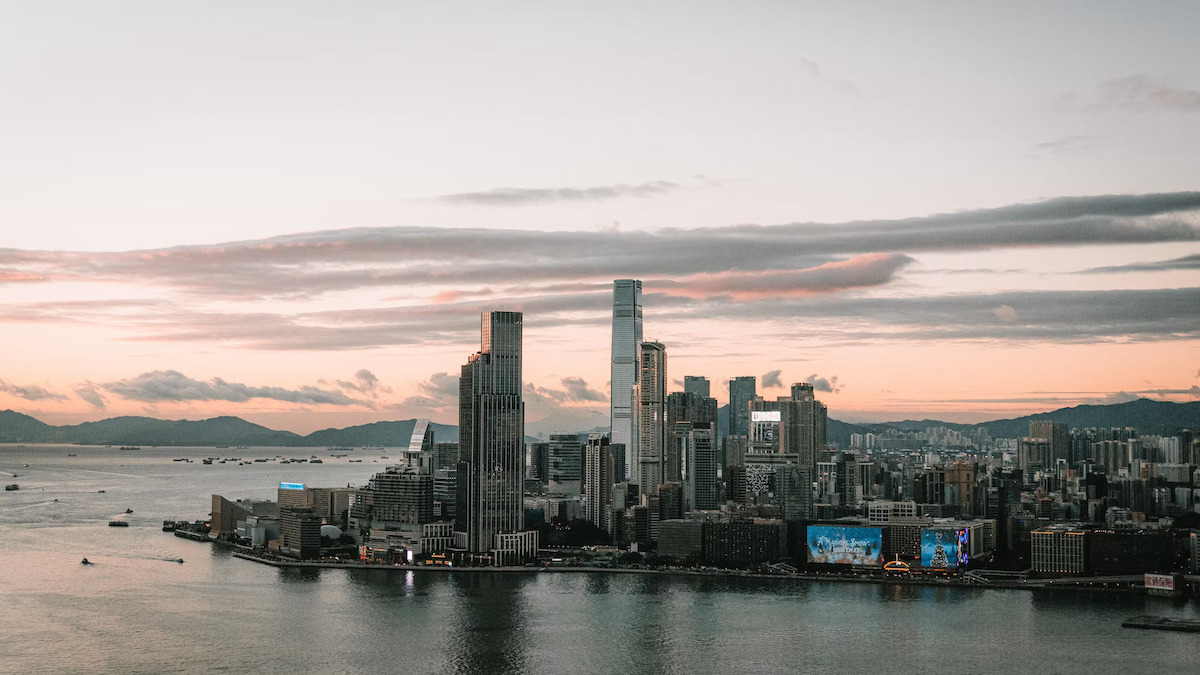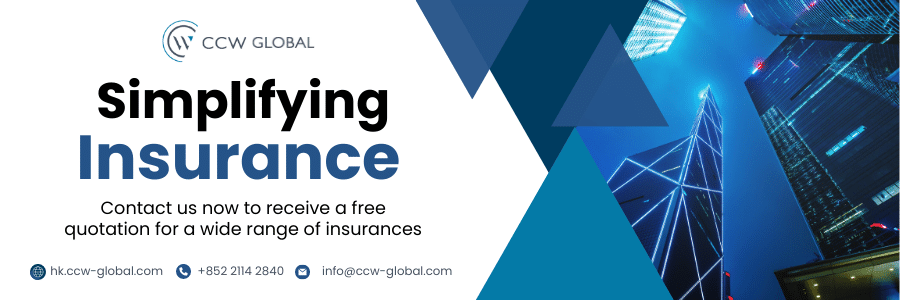When we hear the words “Hong Kong”, the first thing that comes to mind is the city’s iconic and incredible skyline. Known for its towering skyscrapers, Hong Kong architecture combines sleek, contemporary designs with colonial structures and typologies derived from Chinese architecture. If you’re on the hunt for cool buildings in the city — whether you’re visiting for their history and heritage, or simply to snap a photo for Instagram — then here’s our 10 picks, which includes a mix of older structures and modern designs.
The Jockey Club Innovation Tower — Hung Hom
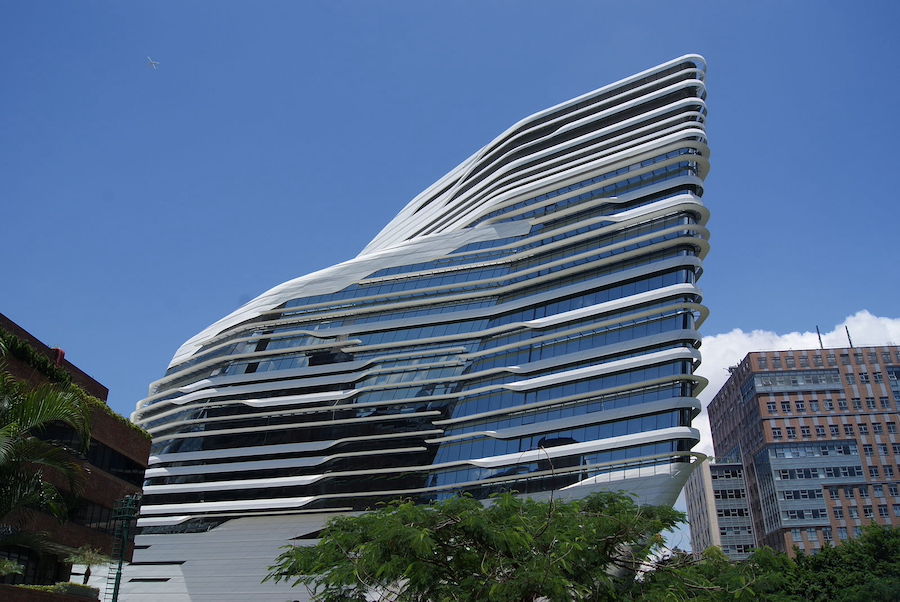
The Jockey Club Innovation Tower caused quite the buzz when it was first constructed, as Pritzker Prize awardee and starchitect Zaha Hadid’s first building in Hong Kong. Part of the Hong Kong Polytechnic University located in Hung Hom district, Kowloon, the 15-storey structure is simply unmissable with its signature “striped” reflective exteriors, a stunning contrast to the red brick buildings of the rest of the university campus behind it. Sprawling over 15,000 metres square in size, with facilities such as design studios and exhibition areas, The Jockey Club Innovation Tower can accommodate over 1,800 students and staff.
Lai Tak Tsuen — Tai Hang
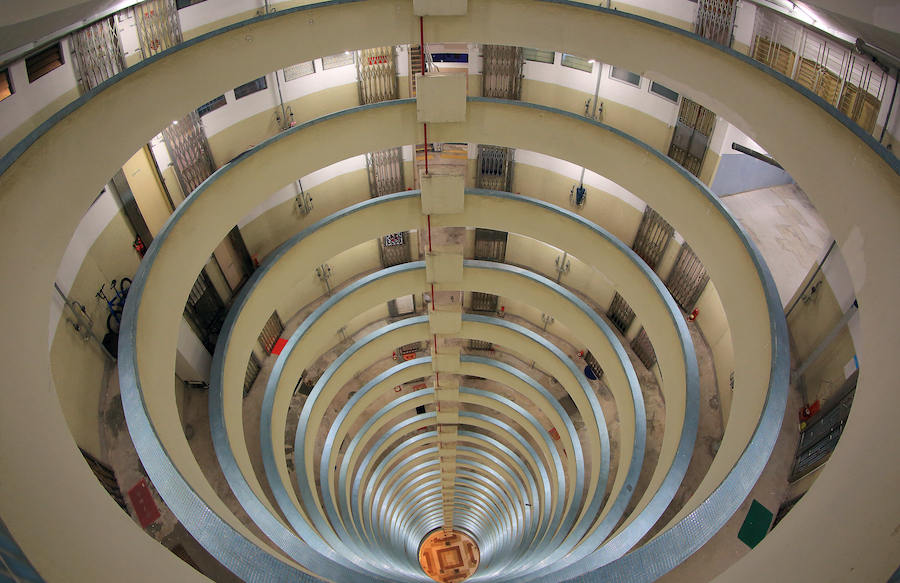
A public housing estate located in the Tai Hang neighbourhood, Lai Tak Tsuen dates back to 1975 and is one of the government’s first housing developments in Hong Kong, as well as the second self-funded project by the Hong Kong Housing Society. Made up of three houses and totalling 2,677 flats, the Hong Kong building sets an example for later housing projects, comprising carparks, shops, multiple children’s centres, an elderly centre, a library, a children’s playground and even a basketball court. Lookswise, the estate is truly remarkable, with a cylindrical structure — the only of its kind in Hong Kong — that is almost mesmerising when viewed upwards from below.
Choi Hung Estate — Ngau Chi Wan
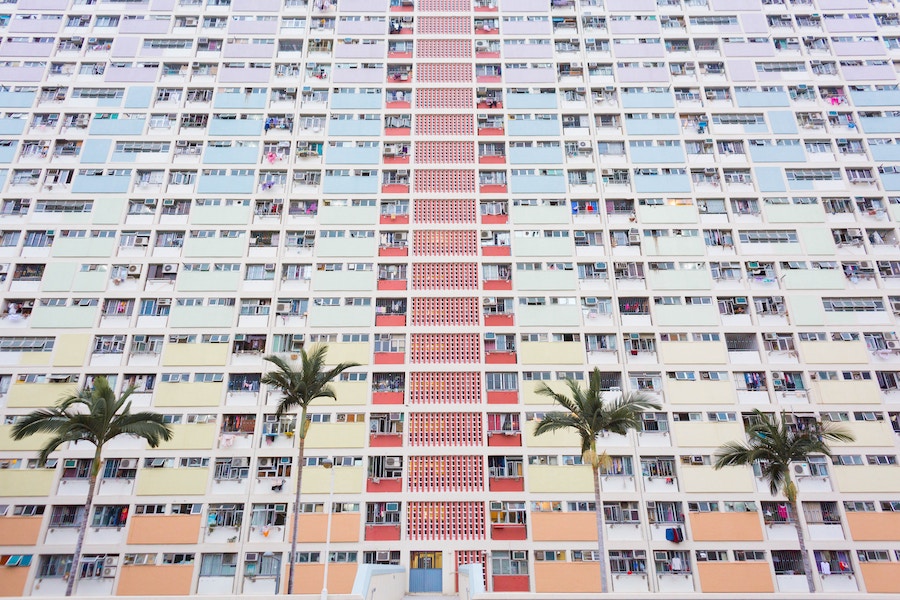
Aside from our iconic skyline, Hong Kong is almost synonymous with Choi Hung Estate. If you haven’t heard of the famous rainbow coloured public housing estate, well, where have you been? Located in Ngau Chi Wan, Kowloon, construction of the estate was completed between 1962 and 1964 and subsequently received a Silver Medal at Hong Kong Institute of Architects Annual Awards 1965. What was once a rural village has, in recent years, become an Instagram hotspot, and it’s not difficult to see why — each storey follows the gradient of the rainbow and multiple blocks tower over the visitor, tall and majestic.
Xiqu Centre — West Kowloon
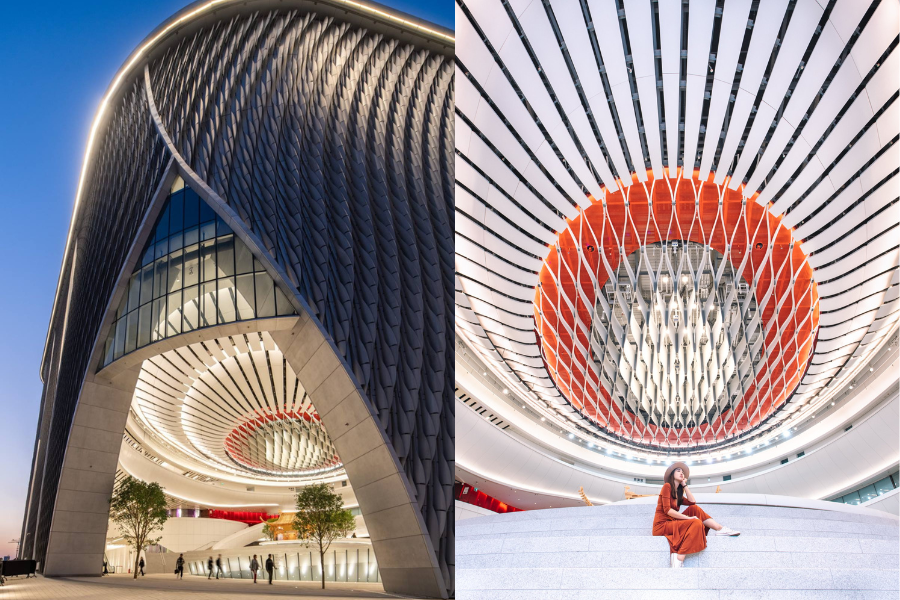
One of the more recent additions to the growing collection of Hong Kong buildings, Xiqu Centre can be found in Tsim Sha Tsui as part of West Kowloon Cultural District’s new art and culture destinations. The venue, opened only three years ago in 2019, is purpose-built for Chinese opera performances and serves as a hub for promoting Cantonese opera and other traditional Chinese theatre. Opening up to visitors with a dramatic curved facade, the seven-storey building’s glowing form is reminiscent of a shimmering lantern, a hallmark of Chinese culture.
Hong Kong Design Institute — Tseung Kwan O
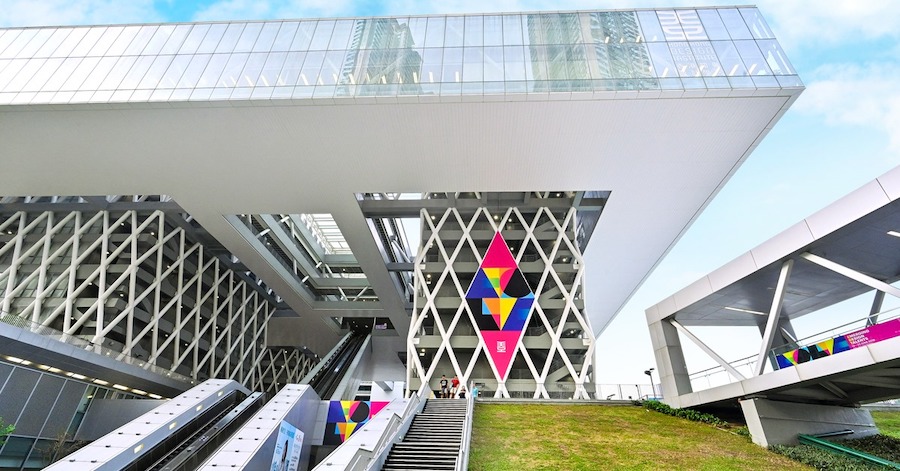
Located in Tiu Keng Leng in the Tseung Kwan O district, the Hong Kong Design Institute is a design school offering higher diplomas, degrees and education programmes. Conceptualized by French architecture firm Coldefy & Associés, the school accommodates up to 4,000 students and comprises four auditoriums, a cafe, a sports hall, and an exhibition hall in the podium area, followed by an urban park and sports ground on the roof, and a library, school administration offices, and other related spaces on the aerial platform.
CityU Run Run Shaw Creative Media Centre — Kowloon Tong
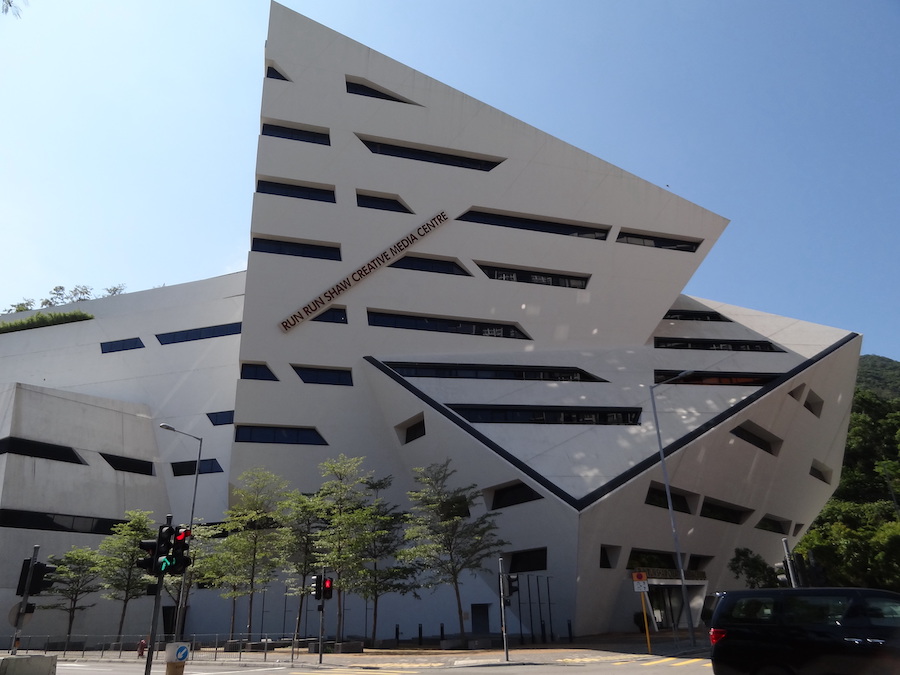
Sitting pretty on 18 Tat Hong Avenue in Kowloon Tong is the Run Run Shaw Creative Media Centre, an academic building north of City University of Hong Kong’s main campus. The nine-storey purpose-built teaching complex was designed by Daniel Libeskind and received numerous awards. Composed primarily of steel, concrete and ceramic tile cladding, Libeskind and his team wanted the crystal-shaped building to provide an inspiring environment for creativity, adding in multiple landscaped garden spaces for both the public and students to enjoy.
Opus Hong Kong — The Peak
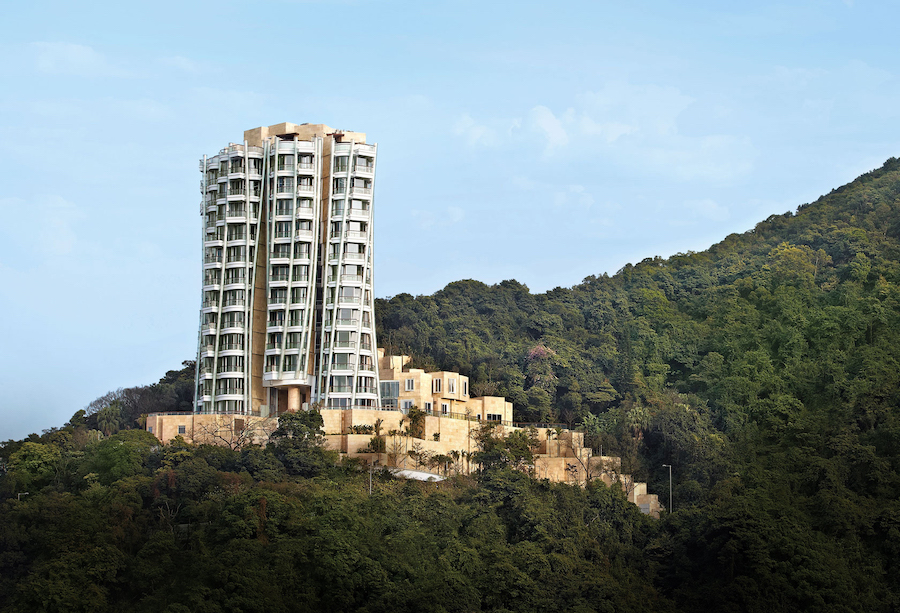
Opus Hong Kong is Pritzker Prize-winning architect Frank Gehry’s first residential building in Asia. Located on the Mid-Levels, the complex consists of 12 units, including two duplexes with pools, each with their own unique floor plan and views. Inspired by movement, which Gehry has long been fascinated with, Opus Hong Kong’s unique helical structure reduces the need for load-bearing walls and allows the facade of the building to be constructed almost entirely of glass. In August 2012, the unit on the eighth floor was sold for a pretty HK$470 million, making it the most expensive apartment sold in Hong Kong.
Monster Building — Quarry Bay
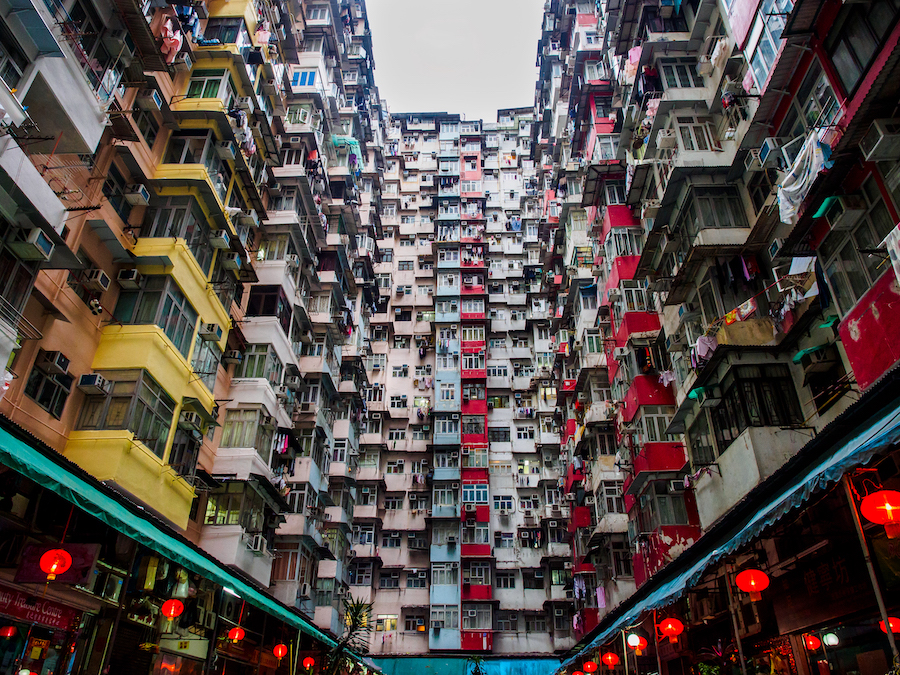
Perhaps one of Hong Kong’s most famous buildings on Instagram, Monster Building first gained fame when it was featured in Hollywood blockbuster Ghost in the Shell and Transformers: Age of Extinction. The name Monster Building actually refers to a group of five connected buildings in Quarry Bay, namely Fook Cheong Building, Montane Mansion, Oceanic Mansion, Yick Cheong Building and Yick Fat Building. Likened to a concrete jungle for its densely packed flats, the example of Hong Kong architecture resembles a Transformer-like monster and is a prime social media spot for photos.
Tai Kwun — Central
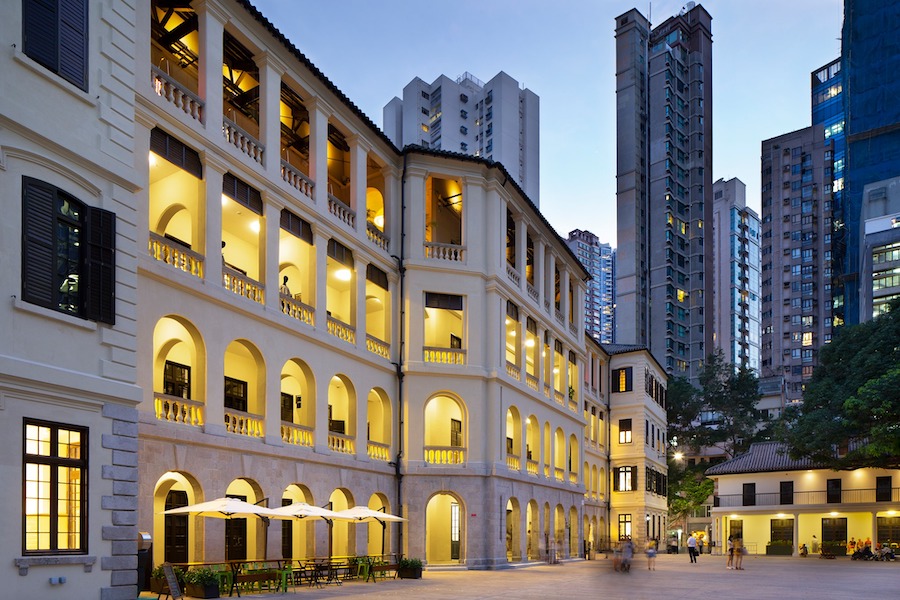
One of the city’s most successful revitalisation efforts, Tai Kwun is the former Central Police Station Compound that has been transformed into an arts and culture hub. It includes three declared monuments made up of 16 historic buildings and is a prime example of how Hong Kong colonial buildings can be successfully preserved and given new life. In addition to the 16 restored structures, two new buildings have also been added — these are JC Contemporary and JC Cube, both designed by Herzog & de Meuron.
Blue House — Wan Chai
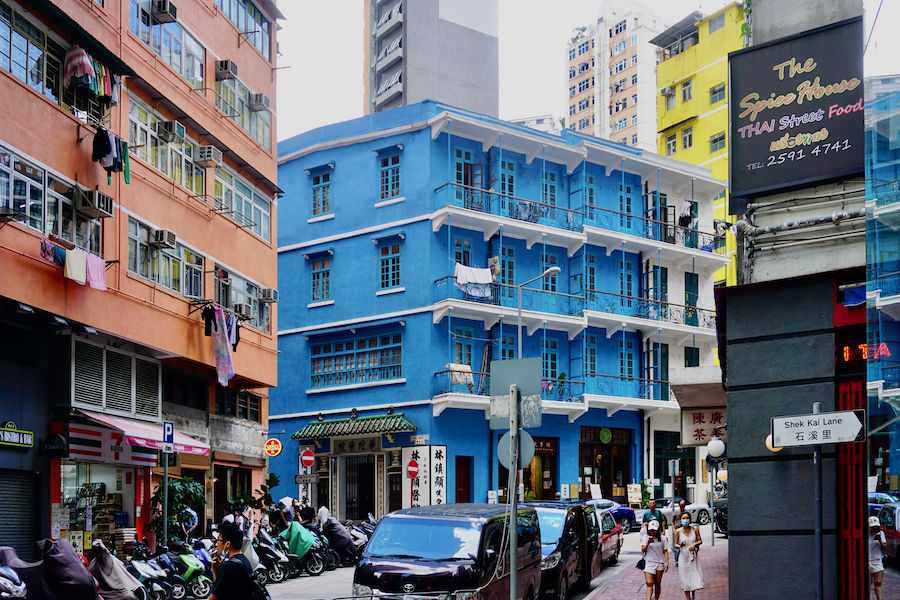
Painted bright blue in colour — hence its name — Blue House is a four-storey tenement block at Stone Nullah Lane in Wan Chai. Today, it’s one of the city’s last remaining balcony-type tong lau and a Grade I listed building. While the upper floors still house its original tenants, visitors are welcome to check out the museum on the ground floor named Hong Kong House of Stories, a showcase of Hong Kong’s culture and society throughout the years.
Header image credits: Giovanni Cheng via Unsplash


